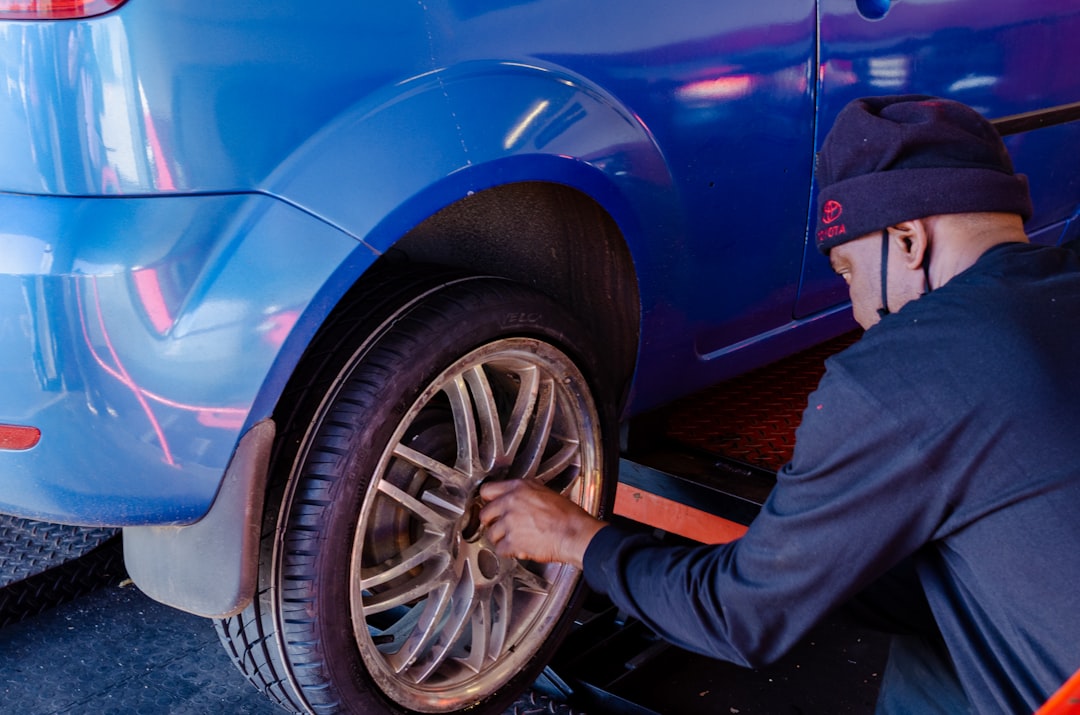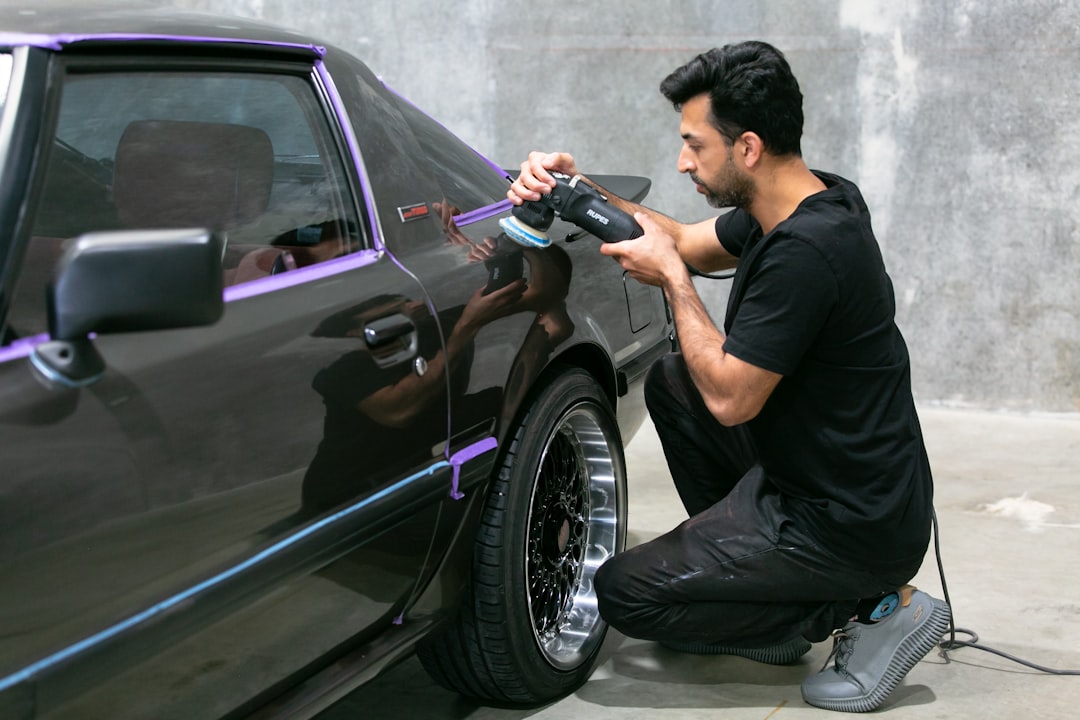

Engage prospects with a scan and streamline customer engagement with FREE QR code marketing tools by Sona – no strings attached!
Create a Free QR CodeFree consultation

No commitment

Engage prospects with a scan and streamline customer engagement with FREE QR code marketing tools by Sona – no strings attached!
Create a Free QR CodeFree consultation

No commitment
In today’s digitally driven world, QR codes have evolved from novelty to strategic powerhouse, especially for local service businesses that depend on timely, measurable engagement. For auto repair services, QR codes provide a frictionless way to connect physical touchpoints to digital actions: scanning, booking, and feedback. The result is faster lead capture, fewer missed opportunities, and better visibility into the customer journey without the need for an app or complex setup.
Auto repair shops face persistent operational friction: inconsistent appointment scheduling, manual intake that loses data, and promotions that reach people too late. QR codes close these gaps by meeting customers where intent peaks, such as at the service desk, in the waiting area, or while reviewing an invoice. With a single scan, prospects can schedule appointments, submit reviews, join loyalty programs, or request estimates, all while you capture attribution data and trigger automated follow-ups.
This guide shows how to turn every service interaction into a measurable growth opportunity. From smart QR placement and clean campaign design to segmentation, attribution, and multi-channel orchestration, you will learn how to deploy QR campaigns that make your shop easier to choose, easier to book, and easier to remember. Whether you want more appointments, more five-star reviews, or more upsells, QR codes provide a simple path to predictable results. For a broader primer on use cases, explore qr codes in marketing.

QR codes help bridge the gap between physical touchpoints and digital experiences, transforming walk-ins, drive-ups, and on-premise visits into clean, actionable lead data. Instead of relying on paper forms or verbal follow-ups that get misplaced, your customers can scan and complete key actions in seconds while your systems record and respond to their interest.
For growth-focused shops, the strategy is straightforward: place high-intent QR codes exactly where customers make decisions, tie each scan to a clear destination and outcome, and route the resulting data into your CRM and remarketing tools. With this approach, you replace guesswork with evidence, and you replace slow manual workflows with automation that works 24 hours a day.
With Sona QR, you can configure dynamic destinations, add UTMs, and sync scan events to your CRM or marketing automation. The outcome is a cleaner, faster path from curiosity to conversion that reduces leakage in your funnel. Learn more in Sona QR’s product overview.

Modern customers expect speed, clarity, and convenience. When they search for terms like “best auto repair services” or read “auto repair service reviews,” they want a fast path to action that does not require email back-and-forth or app downloads. QR codes deliver just that: one scan to book, one scan to review, or one scan to claim an offer. Your shop becomes easier to engage, and your team gains the data to respond instantly. For industry context, see this overview of automotive marketing.
QR codes also give you adaptable, measurable collateral. Once a code is printed on appointment cards, window decals, or oil change stickers, dynamic links can keep the destination fresh. That means your codes always point to the most relevant promotion, availability, or message, without reprinting costs. You can iterate quickly, which helps small teams keep marketing timely and efficient. Explore Sona QR’s automotive industry solutions for more ideas.
QR technology serves as a high-impact, low-cost upgrade to existing operations and marketing. When paired with a platform like Sona QR, it becomes a consistent source of timely, high-intent signals that your team can act on immediately.

Auto repair services benefit from a handful of QR formats that cover the most common customer actions. The right format depends on the goal: booking, contact sharing, support, or ongoing engagement. In practice, dynamic web links and SMS triggers deliver the most value for lead capture and follow-up, while vCards, Wi-Fi, and app downloads play supporting roles.
Choose formats based on what you want the customer to do in that moment. For example, use a dynamic web link for appointment booking on the front desk sign, an SMS code for quick estimate requests on a tow truck magnet, and a vCard on a business card to save your shop details instantly.
For most shops, dynamic web link and SMS codes should be the default. They centralize control, provide robust tracking, and allow for quick updates without replacing printed materials.

To unlock growth, identify the physical moments when customers decide what to do next: ask a question, book a service, or compare options. These moments occur at your front desk, in your waiting area, on printed documents, and on your storefront. QR codes let you intercept that intent and create a measurable bridge to your digital workflow.
Think of each placement as a conversion opportunity with a clear next step. Service desk signage should drive to booking or quick estimates. Waiting area posters should nudge reviews, upsells, or loyalty sign-ups. Invoices and receipts should prompt post-service feedback and maintenance reminders. Exterior signage should capture emergency or after-hours intent.
These placements create measurable touchpoints wherever repair decisions happen. Over time, you can compare scan and conversion rates by location, time of day, and creative, then invest where the lift is greatest.

QR codes are most effective when matched to high-intent customer interactions that recur throughout the service lifecycle. When you place a code at the right moment with a compelling call to action, you accelerate the path from curiosity to commitment and gather useful data along the way.
Below are three core use cases that consistently produce results for auto repair shops. Each one simplifies an analog process, reduces the potential for lost leads, and adds measurable momentum to your pipeline.
To go further, add QR-enabled quick estimate requests in the waiting area and parts pickup areas, plus QR enrollment for text alerts about vehicle readiness. Each scan becomes a data point you can use to nurture and upsell more effectively.
Every QR scan is an intent signal that reveals who is interested, what they want, and when they are most receptive. By deploying unique codes across your touchpoints, you can automatically group customers into meaningful segments, then personalize offers and follow-up with precision. Over time, this builds a powerful audience engine that improves your advertising efficiency and your close rates.
Segmentation is strongest when it reflects real behaviors. Someone who scans a code on emergency towing signage is not the same as a customer who scans a loyalty offer in the waiting area. With the right structure, you can tag both and speak to them differently using email, SMS, and paid media. This is where platforms like Sona QR shine: each scan enriches a contact record and triggers automated workflows in your CRM.
For auto repair specifically, useful distinctions include emergency seekers vs. scheduled maintenance shoppers, price-sensitive coupon scanners vs. premium service browsers, and new customers vs. returning loyalty members. With Sona QR, these segments update automatically, ensuring your retargeting is always timely and relevant.
QR codes act as the connective tissue across your offline and online channels. When you add scannable calls to action to the assets you already use, you reduce friction and gain the ability to measure what used to be untrackable. The result is a connected experience that moves customers from awareness to action with fewer steps.
Think of your materials as a unified system: a flyer drives prospects to a quote, a receipt invites a review, a window decal captures after-hours bookings, and a sponsored video sends viewers to a maintenance checklist. Each scan feeds your CRM and your analytics, so you can see where interest spikes and where to invest next. For creative ideas, watch this short video tutorial.
With Sona QR, you can manage all codes centrally, monitor performance by channel and placement, and push scan data to your CRM and ad platforms. This makes it simple to maintain consistent messaging and keeps every channel accountable to results.
A successful QR program does not require a large team or big budget. It requires clarity of purpose, clean execution, and a feedback loop that helps you continuously improve. Start with one or two high-impact use cases, then scale your footprint across more touchpoints once you establish what works.
Before you print a single code, define how success will be measured. Decide on a primary conversion, such as appointments booked or reviews collected, and a secondary metric, such as time to first response or revenue per repair order. This discipline keeps your tests focused and your iterations informed.
Clarify the one action you want most people to take after scanning. For most auto repair shops, the top objectives are to increase online bookings, drive post-service reviews, or grow a loyalty list that you can market to before the next season.
Your choice of static vs. dynamic determines how flexible and measurable your campaign will be. Static codes are fine for evergreen content like your contact page, while dynamic codes are better for promotions and performance testing.
Design your code and the surrounding callout to be visible and actionable in the environment where it will live. Think about viewing distance, lighting, and dwell time. A front desk sign should be larger, while an invoice code can be smaller but still clear.
Launch in the placements that match your objective and the customer’s mindset. Booking codes belong at check-in, in waiting areas, and on invoices. Feedback and reviews are best at exit points and in post-service emails. Promotions thrive on window decals and direct mail.
Once deployed, monitor scans, conversion rates, and drop-off points. Compare performance by code, location, and time of day. Use insights to update your landing pages, CTAs, and placements. Keep iterating until the campaign achieves your target KPI.
With this checklist in place, you will make fast progress without guesswork. Start small, measure honestly, and scale the winners.
Counting scans is only the beginning. To turn QR engagement into revenue, you need to connect the scan to a person, tie it to a conversion event, and attribute that outcome to a campaign or placement. When your data flows into your CRM and reporting tools, you can move budget toward the channels and messages that generate the most booked jobs and highest ticket sizes. Learn how to tie print to ROI with Sona’s offline attribution guide.
Advanced analytics platforms allow you to see not just who scanned, but what happened next. Did they book within 24 hours, request an estimate, open a follow-up email, or return within three months for preventative maintenance? With this level of insight, you can build buyer journeys that nudge the right next step at the right time.
Sona QR captures real-world engagement, and Sona.com turns that activity into actionable insights you can trust. Together, they help you prove the revenue impact of QR campaigns and refine your marketing mix with confidence.
The most effective QR programs share a few traits: consistent tagging, strong CTAs, automation behind the scan, and staff who know when and how to promote the scan. Focus on these fundamentals and you will see durable gains in conversions and customer satisfaction.
As you scale, get creative with placements that align to natural behaviors. Put a review QR on the counter where customers wait to pay, a booking QR on the window where they compare hours, and a maintenance reminder QR on the oil change sticker where they will see it every day.
For creative deployment, try a QR on a loaner car key tag that links to a satisfaction survey, or a seasonal postcard with a QR to schedule winterization. These small touches increase response and reduce the chance that valuable leads remain invisible. For more peer-tested ideas, browse this forum on auto repair marketing, and consider using stickers and labels to boost visibility on everyday items.
QR-driven campaigns succeed when they align with real customer behavior and remove friction from common tasks. The following examples illustrate how small changes can create big outcomes by turning anonymous intent into measurable action.
These stories also show why dynamic codes outperform static ones in a service environment. As promotions change and seasons shift, dynamic codes let you adapt without reprinting, using scan data to keep content fresh and aligned with demand.
Use these examples as templates, then adapt them to your shop’s context: your services, your customer base, and your brand voice. With dynamic QR codes and trackable destinations, you can test rapidly and invest where the evidence leads.
QR codes have become essential to growth-focused auto repair services. They turn every physical surface into a digital entry point and every moment of interest into a measurable action. By capturing scans at the front desk, in the waiting area, on invoices, in the mailbox, and on your storefront, you make it easier for customers to book, review, and return, while your team gains the data to follow up with precision.
The strategic value is simple: instant engagement, a connected experience from awareness to conversion, and actionable data that drives smarter decisions. With Sona QR and the attribution capabilities of Sona.com, you can launch high-impact QR campaigns in minutes, track performance clearly, and connect scans to revenue. Start with one use case that matters most to your shop, prove the lift, then scale across your customer journey to turn every service interaction into growth. Start creating QR codes for free.
QR codes have transformed the auto repair services industry from traditional outreach into a dynamic lead-generation powerhouse. By seamlessly connecting potential customers to appointment bookings, service promotions, and maintenance tips, QR codes enhance customer acquisition and create personalized, convenient experiences that build lasting trust. Imagine instantly capturing valuable lead information right at your shop or on your marketing materials—and knowing exactly which offers and services drive new business.
With Sona QR, you gain the ability to create dynamic, trackable QR codes that you can update anytime without reprinting, ensuring your campaigns stay fresh and relevant. Every scan is connected to measurable outcomes, helping you optimize your marketing efforts and maximize revenue. Start for free with Sona QR today and turn every scan into a loyal customer and a profitable opportunity.
Signs include unusual noises, warning lights, poor vehicle performance, or routine maintenance reminders that indicate it is time to book an auto repair service.
Choose a shop that offers easy booking, transparent pricing, positive customer reviews, and uses tools like QR codes to provide seamless scheduling and feedback options.
The article does not specify average costs, but QR codes can provide quick access to pricing and service menus for your specific auto repair needs.
You can schedule appointments easily by scanning QR codes placed at service desks, waiting areas, invoices, or promotional materials that link directly to online booking pages.
Best practices include following maintenance schedules, using QR code-enabled materials for timely service reminders, and engaging with loyalty programs or promotions that encourage regular upkeep.
QR codes provide quick access to booking, reviews, estimates, and promotions, reduce manual errors, enable real-time tracking, and streamline customer engagement without needing apps.
Effective placements include front desks, waiting areas, invoices, shop windows, exterior signage, and direct mail to capture customer intent at decision points.
Dynamic web links for booking, SMS codes for quick estimate requests, vCards for contact sharing, Wi-Fi access in waiting areas, and app download links are most useful.
Shops can print QR codes on invoices or exit signage directing customers to feedback pages that encourage internal ratings and posting on platforms like Google Reviews.
By recording scan context such as time, location, device, and campaign, syncing data to CRM systems, and analyzing conversion rates to optimize placements and messaging.
Yes, unique QR codes segment customers based on behavior and location, enabling personalized follow-ups and targeted marketing through CRM and advertising platforms.
Examples include oil change stickers with rebooking links, waiting area quick estimate requests via SMS, and invoice QR codes that boost review submissions.
Define a clear objective, choose dynamic QR codes, design visible CTAs, deploy at high-intent touchpoints, track performance, and iterate based on data.
Dynamic codes allow changing destinations without reprinting, capture data for attribution, enable A/B testing, and keep promotions timely and relevant.
Use unique codes per placement, add UTMs for tracking, automate follow-up communications, and train staff to actively promote QR code scanning.
Use Sona QR's trackable codes to improve customer acquisition and engagement today.
Create Your FREE Trackable QR Code in SecondsJoin results-focused teams combining Sona Platform automation with advanced Google Ads strategies to scale lead generation

Connect your existing CRM

Free Account Enrichment

No setup fees
No commitment required

Free consultation

Get a custom Google Ads roadmap for your business






Launch campaigns that generate qualified leads in 30 days or less.
